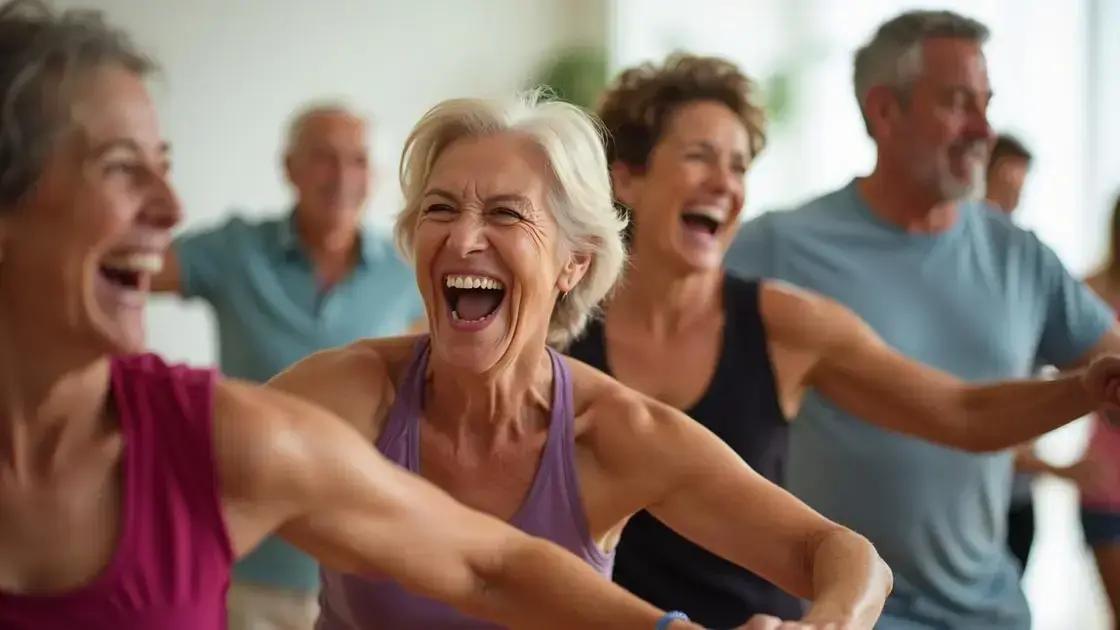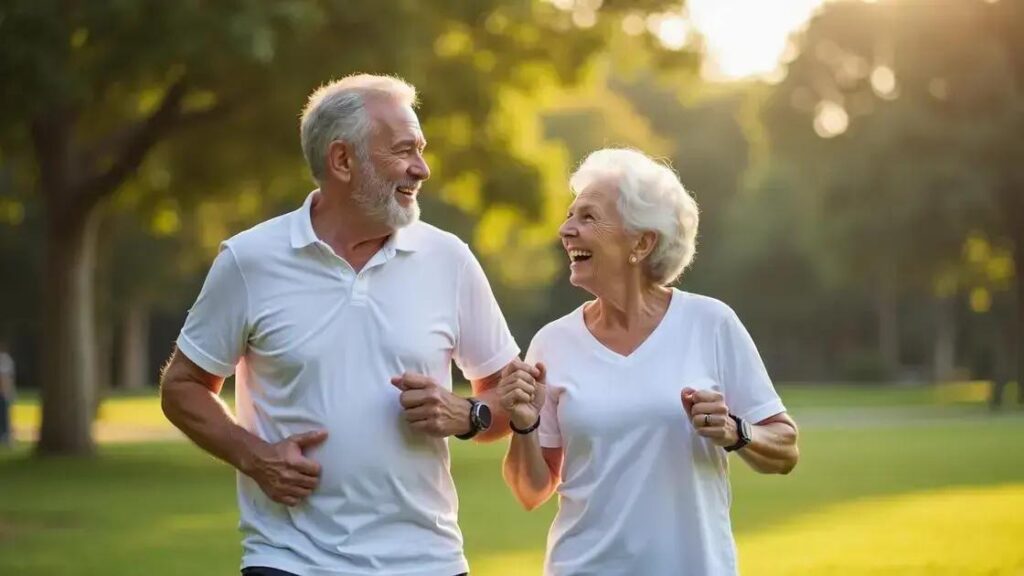To stay motivated to exercise after 50, it’s important to understand the value of regular physical activity, set realistic fitness goals, find enjoyable exercises, and build a supportive community. Engaging in activities you love, connecting with others, and keeping a structured routine can significantly enhance your motivation and overall well-being.
Staying motivated to exercise after 50 is essential for maintaining health and well-being as you age. Engaging in regular physical activity helps improve energy levels, resilience, and overall quality of life. In this article, we will discuss practical strategies for staying motivated, including understanding the importance of exercise, setting realistic goals, discovering enjoyable activities, and building a supportive community that encourages your fitness journey.
Understanding the Importance of Exercise After 50

Exercise plays a vital role for those over 50 in numerous ways. Regular physical activity helps enhance overall health and promotes longevity. As we age, maintaining our strength, balance, and flexibility becomes crucial. Incorporating exercise into our daily routine can prevent deterioration and keep us active and independent.
Benefits of Regular Exercise
Exercise after 50 offers a variety of benefits, including:
- Improved cardiovascular health: Regular activities like walking or cycling can strengthen the heart.
- Enhanced mental health: Exercise releases endorphins, which can improve mood and reduce stress.
- Better bone health: Weight-bearing exercises help maintain bone density, reducing the risk of fractures.
- Increased strength and flexibility: Strength training is essential to combat muscle loss as we age.
Aiding Mobility and Independence
Staying active is crucial for maintaining mobility. Exercise can helpcombat age-related declines in physical function. Activities such as yoga or tai chi improve balance, which is vital for fall prevention.
Social Interaction and Community
Participating in group exercises can provide social benefits. Meeting others in fitness classes fosters connections, combating feelings of loneliness and isolation that can accompany aging.
Finding the Right Fit
Everyone’s exercise journey is unique. Understanding the importance of staying active helps older adults find activities that suit their interests and abilities, making it easier to stay motivated.
Setting Realistic Fitness Goals

Setting realistic fitness goals is key to maintaining motivation when exercising after 50. Achieving goals can boost confidence and encourage you to stick with your fitness routine. Here are some steps to create effective fitness goals:
Define Your Objectives
Start by identifying what you want to accomplish. Is it to improve strength, lose weight, or enhance flexibility? Clear objectives provide direction and help you stay focused.
Make Your Goals Specific
A goal should be precise. For example, instead of saying “I want to exercise more,” set a target like “I will walk 30 minutes a day, five days a week.” This clarity makes your aim more tangible.
Keep Goals Attainable
It’s important to set goals that are achievable based on your current fitness level. If you have not been active, jumping straight into daily workouts may be overwhelming. Start with small, realistic changes, such as stretching for 10 minutes a day.
Use the SMART Criteria
Using the SMART criteria can refine your goals:
- Specific: Clearly state what you want to achieve.
- Measurable: Include how you will track progress.
- Achievable: Ensure the goal is realistic.
- Relevant: Goals should matter to you and fit your lifestyle.
- Time-Bound: Set deadlines to create a sense of urgency.
Record Your Progress
Keeping track of your achievements helps maintain motivation. Use a journal or fitness app to log workouts and milestones. Regularly reviewing your progress can remind you how far you have come and motivate you to continue.
Finding Activities You Enjoy

Finding activities you enjoy is crucial for staying motivated to exercise after 50. Enjoyable exercises not only make workouts feel less like a chore but also encourage you to stick with them long-term. Here are some tips to help you discover activities that you love:
Try New Things
Don’t hesitate to explore different types of physical activities. Whether it’s dancing, swimming, hiking, or joining a fitness class, experimenting can help you find what suits you best. Start with group classes to try various activities in a friendly environment.
Consider Your Interests
Think about what you have enjoyed in the past. If you’ve always loved nature, hiking could be your go-to exercise. If you enjoy social settings, consider team sports or community fitness classes. Align your activities with your interests for better enjoyment.
Listen to Your Body
When exploring activities, pay attention to how your body feels. Choose exercises that make you feel good and avoid those that cause discomfort or pain. It’s essential to ensure the activities you choose promote your well-being.
Establish a Routine
Incorporating activities you enjoy into a regular routine can help make exercise a habit. Schedule specific times for these activities each week, and treat them as important appointments. This consistency will help reinforce the habit.
Join a Community
Being part of a group can enhance your experience. Join exercise clubs or local community groups focused on activities you enjoy. Sharing the experience with others adds a social element and increases accountability.
Building a Supportive Community

Building a supportive community is essential for staying motivated to exercise after 50. Having friends or groups to exercise with can greatly enhance your commitment and enjoyment. Here are several strategies for creating a supportive environment:
Connect with Others
Start by reaching out to friends, family, or neighbors who are also interested in staying active. Exercise together, share tips, and encourage each other to stick with your fitness goals.
Join Local Clubs or Classes
Many communities offer fitness classes or clubs specifically for seniors. These programs provide a structured environment where you can meet like-minded individuals and develop friendships.
Use Social Media or Online Forums
Online communities can also offer support. Join social media groups or forums focused on fitness for older adults. These platforms can provide motivation, advice, and a sense of belonging.
Participate in Group Activities
Consider joining group activities like walking clubs, hiking groups, or yoga classes. These settings not only make exercise more enjoyable but also foster a sense of community.
Encourage Accountability
Having a workout buddy can help keep you accountable. Schedule regular exercise dates with your partner or friends. This way, you are more likely to follow through and show up.
Staying Active and Motivated After 50
Maintaining motivation to exercise after 50 is key to enjoying a healthy and active lifestyle. Through understanding the importance of exercise, setting realistic fitness goals, finding enjoyable activities, and building a supportive community, you can create a sustainable fitness routine.
By connecting with others and exploring various fitness options, you ensure that your exercise journey remains engaging and fulfilling. Remember, it’s not just about physical health; it’s about enhancing your overall quality of life.
Embracing these strategies will empower you to stay motivated and continue enjoying an active lifestyle well into your later years.
FAQ – Frequently Asked Questions about Staying Motivated to Exercise After 50
Why is regular exercise important after 50?
Regular exercise helps maintain strength, balance, and flexibility, which are essential for overall health and longevity as we age.
How can I find activities I enjoy for exercise?
Try new things like dance classes, hiking, or walking groups. Reflect on past interests and choose activities that align with what you love.
What are some tips for setting realistic fitness goals?
Set specific, measurable, achievable, relevant, and time-bound (SMART) goals. Start with small, manageable steps to ensure success.
How can I build a supportive community for exercising?
Connect with friends and family, join local clubs or fitness classes, or participate in online forums to surround yourself with encouraging individuals.
What benefits come from exercising with others?
Exercising with others can increase motivation, improve accountability, and provide social interaction, making fitness more enjoyable.
How can I stay accountable to my fitness plan?
Schedule regular workouts with friends or family, keep a fitness journal, or join an exercise group to maintain accountability.












